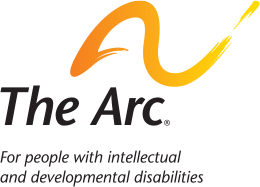President Trump Moves to Destabilize the Affordable Care Act (ACA)
The Arc is deeply disappointed by two recent initiatives of the Trump Administration regarding the Affordable Care Act (ACA). The first is the Administration’s decision to end cost sharing reduction (CSR) payments, a decision which will be devastating to the health insurance marketplace created by the ACA. CSRs were included in the ACA to help ensure that people earning less than 250% of the federal poverty level ($60,750 for a family of four in 2017) can afford out of pocket expenses such as deductibles and co-pays. The money is provided to the insurance companies to help them offer the required affordable coverage. CSRs are different from the premium tax credits also required by the ACA to help individuals and families afford the premiums. The tax credits are available to people earning up to 400% of the federal poverty level ($97,200 for a family of four in 2017).
Health insurers urged the Trump Administration to continue the payments to help keep premium costs down and to keep health insurers selling in the marketplace. The Congressional Budget Office estimated in August that ending the CSR payments would cost taxpayers $6 billion in 2018 and $21 billion in 2020. This is because the premium tax credits would go up when premiums are raised by insurers to offset the loss of the CSR. This move is consistent with the Trump Administration’s desire to undermine the ACA by driving more insurers out of the marketplace and discouraging people from signing up for coverage.
Last week the President also signed an executive order directing federal agencies to find ways to offer health insurance products that do not comply with the consumer protections in the ACA. These protections include ending pre-existing condition exclusions, ensuring that people with health conditions do not pay more, ensuring health plans cover adequate health care services, and other protections. These changes are particularly critical to people with chronic illness and disabilities who needs these protections to have access to affordable care that meets their needs. Promoting cheap and skimpy plans will hurt people who have more health care needs. It can also draw healthier people to the inadequate plans outside of the marketplace. These changes could make health insurance more expensive in the marketplace.
The executive order also directs agencies to figure out how to allow insurance plans to be sold across state lines. Currently health insurance plans are regulated on the state level. State insurance commissions are responsible for ensuring that the insurance sold in the state is sold by reputable and financially secure companies and meet the insurance requirements in the state. This type of change would bypass the state insurance commissions in addition to allowing plans that do not include the ACA protections.
The executive order does not immediately make these policy changes but directs the agencies to find ways to do so. These policy changes are in addition to the Trump Administration’s decisions to shorten open enrollment, slash advertising about open enrollment, shut down the healthcare.gov website for periods of time during open enrollment, and slash funding for health care navigators who help people with questions. Together these actions create additional barriers to enrollment.
The newest changes in the executive order and relating to the CSRs will depress enrollment, increase costs, and be particularly harmful to people with chronic illness and disabilities. The changes do nothing to improve access to affordable health care. Instead, it is expected that people with pre-existing conditions will be paying more for less in a destabilized health insurance marketplace.









